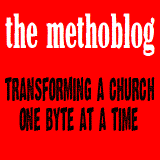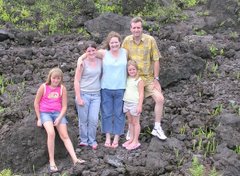Sitting with the Casket

Last weekend, Pastor Simeon buried his younger brother.
Alain Damase was only 31 years old when he died in a
The first step is to remove the body from the morgue. Simeon’s family couldn’t afford to hire a hearse; instead, a taxi backed up to the front doors of the morgue last Friday and four hefty men loaded the coffin into the back of the car.
The taxi then drove to the family home in
The coffin was removed from the taxi and placed on a low table in the living room of the house, where it stayed until the next morning.
I was invited into the room to view the body, and take a seat in the chairs which ringed the room. The coffin wasn’t opened; instead, there was a pane of glass on the top of the casket, so that the body could be seen.
As I sat in the room with grieving family members, I experienced true Cameroonian mourning. One by one, people filed into the room to scream, cry, shout and moan their feelings.
It was an incredibly intense experience, one that made me truly feel uncomfortable.
A young man, presumably a friend, shouted for several minutes at the deceased: “Alain, how can you do this? Why have you left us? You know you’ve disappointed us!”
Several old women came in and began sobbing loudly, interspersed with loud shouts in a tribal language.
At one point, Alain’s mother rose and started praying in a loud voice, giving thanks to God, and saying that she understood that this was God’s plan and will.
I finally was given permission to leave the room, which I did quickly. There would be a worship service much later in the evening, but the gathering of people to mourn, cry, and pray would go on all night long.
Then, in the morning, the body was finally laid to rest in a grave behind the family house.
I never feel more intensely my “foreignness” and “strangeness” than in cultural gatherings like funerals. I’ve done my share of funerals as a local church pastor, but in
I remember studying the grief process in pastoral counseling classes. I learned about the various stages of grief: shock, denial, anger, depression, etc. But I had never seen them all displayed so openly in one place and at one time. I was watching people go through the entire grief process in ten minutes, at full volume and in shocking detail!
It may have been uncomfortable for me to watch, but I came to understand that this may actually be a very healthy way to mourn, rather than the sterile funeral services we plan in


